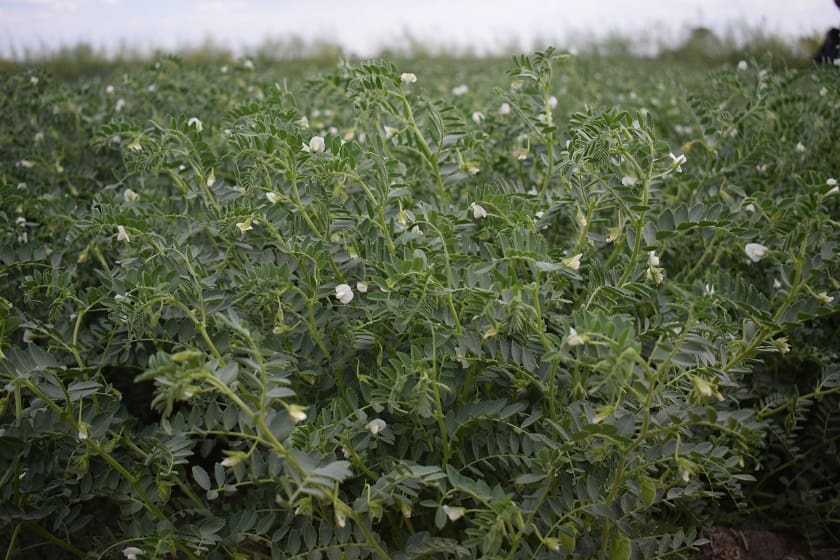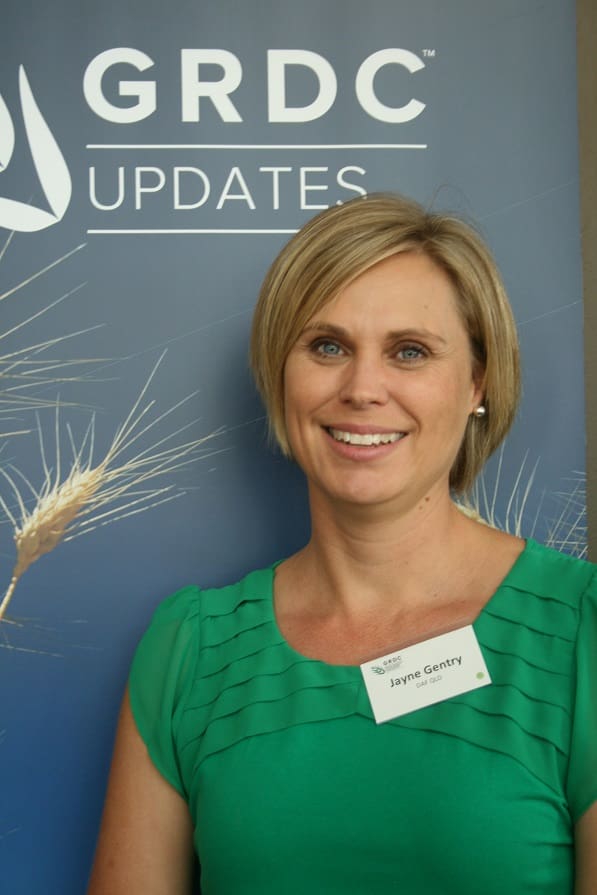
Research has found that higher legume frequency farming systems generally utilise soil mineral N to the same extent as cereal crops and have higher N export which offsets potential N fixation inputs.
RESEARCH scientists in New South Wales and Queensland are `mythbusting’ a commonly held belief that grain legume crops bolster soil fertility and reduce the need for costly nitrogen (N) inputs.
Recent research comparing the nutrient inputs of different farming systems and long-term impacts on soil nutrient status and cycling has found that most farming systems involving a range of crop species extract more nutrients than are supplied by common fertilisation strategies.
The five-year project is a flagship northern research investment for the Grains Research and Development Corporation (GRDC) and has been undertaken in collaboration with the Department of Agriculture and Fisheries (DAF), CSIRO and the NSW Department of Primary Industries (NSW DPI).
It centres on comparing a baseline farming system (common management in a region) against a number of system modifications including increasing the frequency of legumes in the rotation and increasing nutrient inputs via N and phosphorus (P) fertiliser.
After four years of research, insights have been drawn across the six regional sites stretching from central Queensland to central west NSW and the larger site at Pampas on the eastern Darling Downs.
NSW DPI researcher Jon Baird said the higher legume frequency farming systems were generally found to utilise soil mineral N to the same extent as cereal crops and have higher N export which offset potential N fixation inputs.
“Importantly, these results were consistent across the full range of starting soil N conditions, from locations with very high starting mineral N status to locations with low mineral N status where legumes would be required to fix N to meet their needs,” Mr Baird said.
“These results challenge the commonly held assumption that grain legumes will have benefits for reducing N fertiliser needs in the crop sequence.
“As our capacity to grow high yielding grain legumes has increased so too has our harvest index and hence the ratio of N removed in grain to that left in biomass, thereby diminishing the contributions of residual N after the crop.”
The research has also provided important data quantifying the impact that the inclusion of more legumes in the rotation has on increasing potassium (K) removal from the soil reserves.
With legumes containing up to three times the concentration of some nutrients compared to cereals, nutrient export tends to be high in spite of comparatively lower yields.
Trial results have demonstrated that K export is proportional to legume frequency within individual farming systems.
The results have implications for modern farming systems which have fostered a substantial increase in the area sown to legumes and the amount of grain being produced.
DAF principal development extension officer Jayne Gentry said the challenge facing industry was how and when to replace this K in the farming system.

DAF principal development extension officer Jane Gentry has been involved in comparing the nutrient inputs of different farming systems and long-term impacts on soil nutrient status and cycling as part of a five-year northern farming systems project. (Photo GRDC)
“With soil fertility on the decline across the northern region, there’s heightened interest among growers in strategies to halt or reverse this trend,” she said.
“Past research suggests that this can be achieved through maximising biomass production, thereby increasing soil organic matter levels and building the natural supply of nutrients such as N and P.”
However maximising biomass production relies on an adequate supply of crop nutrition as well as the provision of nutrients to promote soil microbial processes.
The current research targeted strategies to increase crop biomass and yield potential through applying enough N and P to soil for crops to reach 90 per cent of water limited yield potential given starting soil moisture and sowing date.
In baseline systems, fertiliser amounts were formulated for crops to achieve average yield or 50pc of the water limited yield potential.
“On average across all sites an extra 83 kg N/ha was applied between 2015 and 2018 relative to the baseline system. The additional N increased grain N export at seven of the eleven sites,” Ms Gentry said.
“The results indicated that applying N fertiliser to aim for a 90th percentile yield potential can reduce the mining of mineral soil N. This was evident in soils with high fertility as significant amounts of applied N fertiliser remained in the mineral N pool available for the use by subsequent crops.
“However, it is important to recognise that many of the trial sites were water limited in some years and could not maximise yield potential.
“Before we can draw any definitive conclusions, we’ll need to assess longer term trends of underlying soil fertility such as organic carbon or total N pools.”
The research also challenged another commonly held assumption – that some grain legumes are more efficient than others at increasing N mineralisation during the subsequent fallow period prior to the next crop.
There was little difference in soil N extraction or subsequent mineralisation between various grain legumes, challenging assumptions that faba bean or field pea provide greater N benefits to the farming system.
Initial results from across the sites suggest that N benefit for subsequent crops following grain legumes was not as good as expected due to mineral N status being affected by mineralisation rates, denitrification, and microbial tie-up, however Ms Gentry said more sites and seasons were needed to fully understand these interactions.
Source: GRDC
For more information on the research findings, download a copy of the GRDC Update paper The impact different farming systems have on soil nitrogen, phosphorus and potassium from the resources and publications section of the GRDC website www.grdc.com.au or click here (https://grdc.com.au/resources-and-publications/grdc-update-papers/tab-content/grdc-update-papers/2019/03/the-impact-different-farming-systems-have-on-soil-nitrogen,-phosphorus-and-potassium)
Grain Central: Get our free daily cropping news straight to your inbox – Click here

HAVE YOUR SAY